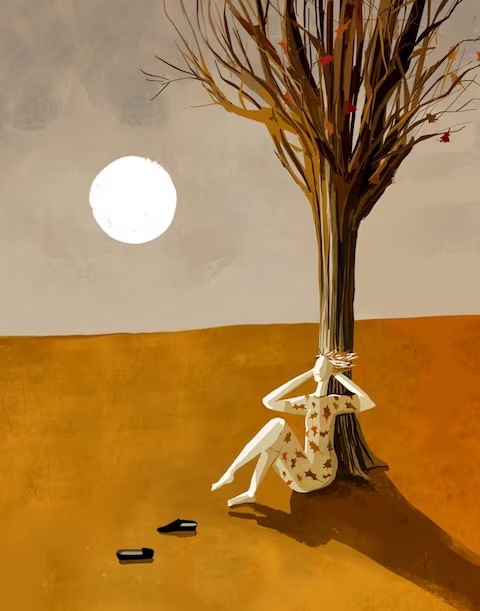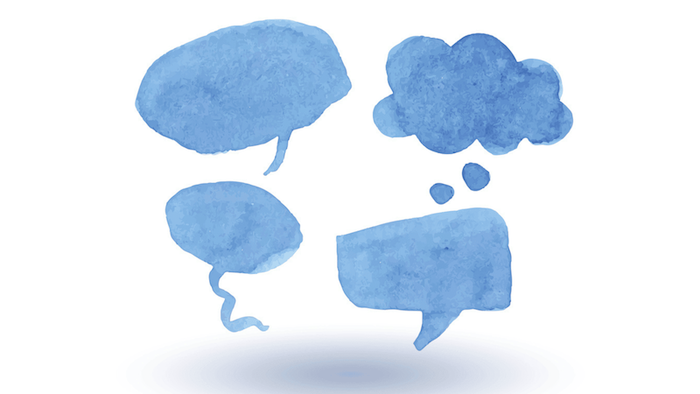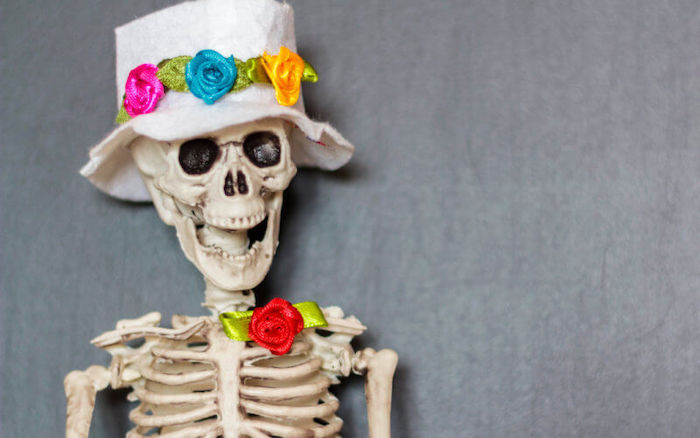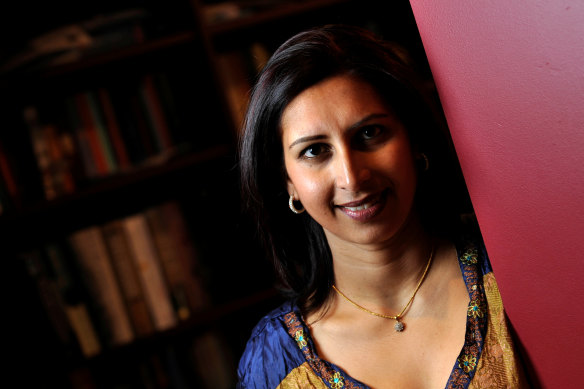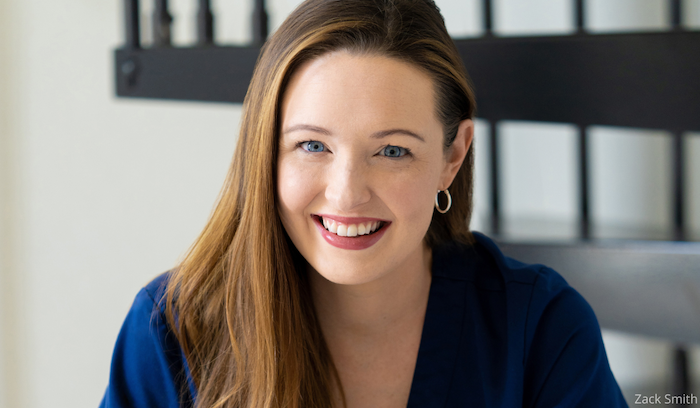— And We Chose Not To Tell Him. Did We Make The Wrong Decision?
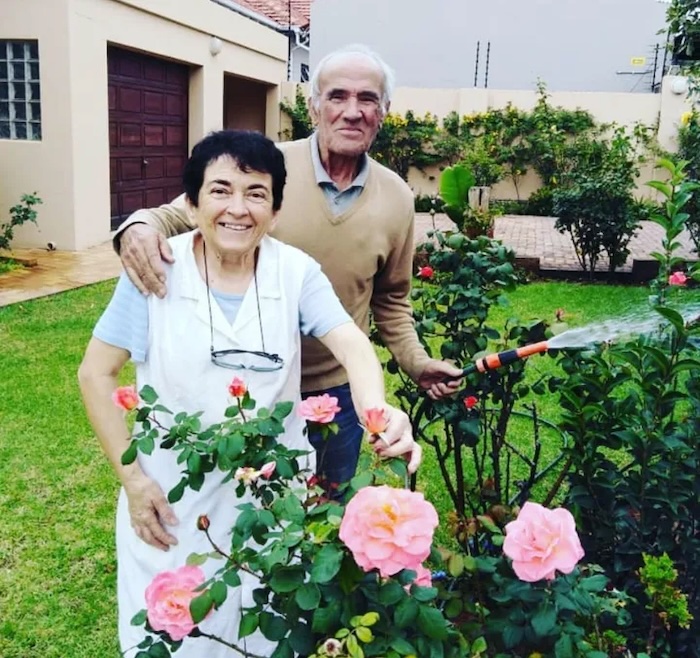
“Sometimes I feel pressured to confirm that he’s getting better. I can’t tell him that actually, he won’t.”
I walk into my father’s bedroom, and there’s a different man in his bed. I reel in shock but slap a smile on my face because I don’t want to hurt his feelings. It’s still him, but the disease he’s been fighting for the last 10 years is stealing him away from us.
My father’s bedridden, out of breath even at rest. He’s strapped to his rumbling oxygen machine all day and he’s lost so much weight that the bones in his collarbones and cheeks are straining against his skin. He has a barrel-shaped chest because his lungs are overinflated with air that they can’t process. This is what COPD, Chronic Obstructive Pulmonary Disease, looks like.
My mother calls me out of the room and into the kitchen where we huddle with the excuse of making tea.
“I asked the doctor for more antibiotics for your father to treat his cough,” she whispers in Italian.
Coughs are common for him and happen every few weeks. If not treated promptly, usually with a round of antibiotics, they can spiral into a full-blown chest infection.
“He said it’s only a matter of time before your father goes.” My mom’s eyes widen and fill with tears. “What does that mean? Where would your father go?”
I swallow hard, but my throat is concrete. We’ve been expecting this — COPD is a progressive disease, and over the last year, it’s been getting worse — but it’s still a shock.
“When’s the doctor coming?” I ask.
She frowns. “Why would he come?”
“To tell Dad that he’s dying.”
“No, we can’t tell him,” my mother says firmly. “It would make him so depressed.”
My mother is the person doctors inform about my father’s condition. With English being my father’s second language, he’s relied on her to filter and trickle the information down to him.
Over the years, when my dad was frustrated with his illness, we’d gently remind him that he had lung damage from smoking. But there’s what I call “disease denial” in my family. My parents have always tried to overcome illness by pretending it doesn’t exist. Years previously, when my father had prostate cancer, he didn’t acknowledge it was cancer. He’d call it a “crust” the doctors would remove. (Thankfully, he was fine.) Even when I was diagnosed with thyroid cancer at 35, my parents denied it completely, as though something so scary couldn’t happen. Perhaps this is how they cope.
I wonder what I’d want if I were in his position. Would I want someone to tell me that my time was limited and that I wouldn’t ever be able to step out of bed again? How would I feel if the people around me were lying to me about my condition?
A study published in Supportive Care in Cancer found that not telling a terminally ill patient that they’re dying is quite common in some countries, such as Italy, Spain and Japan — and even doctors struggle with the question of whether or not to inform their patients.
An oncologist interviewed in the study states that although a doctor has the right to inform their patient as long as this knowledge won’t harm the patient’s health, it’s difficult to know what harm could be caused by spilling the beans.
I’m now worried about what harm could be caused to my father — and us — by keeping the information to ourselves.
I’m not sure how to navigate visits with my father when the lie of his death is hanging over me, especially when he says heartbreaking things like, “Why can’t the doctors figure out how to treat me?”
This might sound strange, but my father never learned how to use the internet, so the only information he receives about his condition is from us and his doctors.
I just nod and say stupid things like, “It’s terrible… I’m so sorry…”
Even worse, sometimes I feel pressured to confirm that he’s getting better. Once the antibiotics start to clear up his cough, he says, “I think a few more days in bed, and then I’ll be able to walk around.”
What am I supposed to say to that? I can’t tell him that actually, he won’t. Or that the antibiotics won’t ever completely heal him. Instead, I say, “That’s great, Dad!”
When he begins to wrap up a phone call, I quickly slip in an “I love you lots.” It’s weird because we’ve never had a relaxed, open relationship in which saying such things to each other is no big deal. But, while he doesn’t know he’s dying, I do, and it makes me want to remind him that he’s loved. When I express such emotion, he pauses, sometimes laughs uncomfortably, or says “OK!”
If he knew he was dying, maybe he’d understand why I’ve suddenly turned into a sappy, emotional thing.
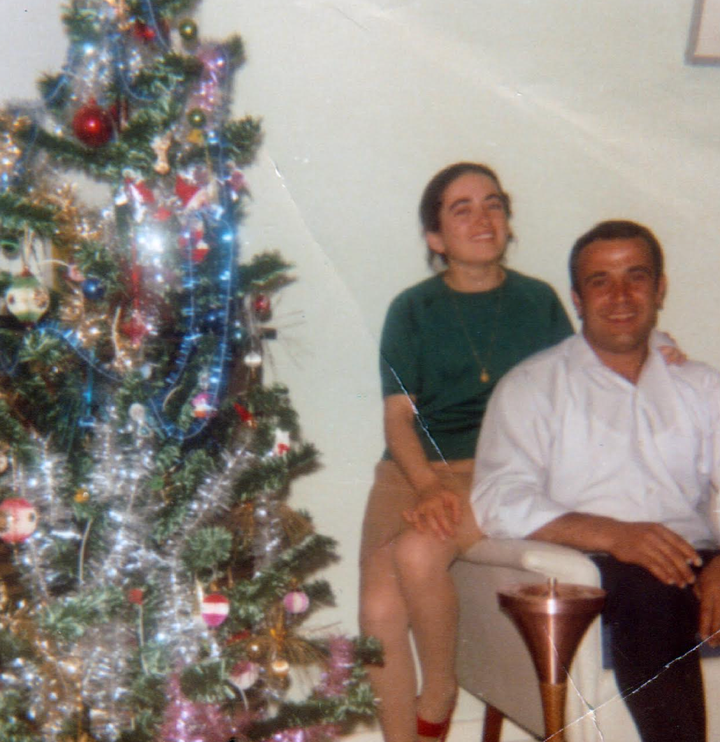
Lying does strange things to us. Soon, it feels like my mother, sister and I start believing our own lies. Or maybe we’re just in denial about my father dying.
“Dad’s being admitted to the hospital for another one of those chest infections,” my sister breezily tells me on the phone when he’s re-hospitalised a few months later. “Same old stuff, nothing to worry about, I’m sure.”
We’ve been on the flare-up rollercoaster a few times over the last two years and we’ve become used to it. It’s easy to forget that one of those flare-ups could lead to death. My father’s lungs are so damaged from decades of smoking that they can’t handle a mild case of the sniffles.
Denial becomes grim acceptance. I’m constantly waiting for the call that he’s near the end. My heart races and my hands shake every time the phone rings. My anxiety intensifies when doctors say his body’s not absorbing the antibiotics he’s been prescribed for his lung infection.
The fact that my father doesn’t know he’s dying means that I wait for a final conversation with him that might not happen. This deathbed talk isn’t something reserved for Hollywood movies: I’ve heard about it from friends who’ve lost their parents. The general consensus is that there’s a loving conversation between the dying parent and their children, with those last words being meant to emotionally strengthen the surviving family members.
If we’d been honest with my father about his impending death, perhaps he would’ve been in a position to initiate such a conversation, knowing that his time was so limited.
During his life, my father was always a bit of a mystery, holding his deep emotions close to his chest and sometimes choking on them the way he was now choking on air. It was rare for him to hug us or say that he loved us. I hardly ever saw him cry, except when his parents died and Italy lost the World Cup.
He became even more reserved during his last weeks. I would have loved to know what he was thinking or feeling and if he had any fears about dying, but I couldn’t chat to him about any of it.
“My father was a mystery even in the days leading up to his death, and I fear we might have had something to do with this because we kept news of his own death from him.”
Hiding the truth about his condition from him causes me to have to censor myself when this time in a person’s life should be the most honest and open.
Despite this, the doctors go along with our wishes of not telling my father the truth.
Bad things always seem to happen on a Monday morning. The call comes in at 8 a.m. The lung specialist finally gives it to us straight: My father won’t make it to the end of the day, and we have to go to the hospital right away.
My husband and I rush to see him for the last time. I’m anxious about what to expect. Will we all cry together? What will he say? How am I going to deal with seeing my father in the last hours of his life?
I push through the doors of the high-care unit and see my father lying in a hospital bed in the room ahead of me. He’s looking straight at me. Relief washes over me at the thought that we’ll be able to speak.
But as I get closer, I realize his eyes aren’t opened – they just appear that way because the non-invasive ventilator strapped so tightly over his head is pulling the skin of his face. A machine is breathing for him.
This isn’t the deathbed conversation I expected. It’s a one-way conversation in which we hope our words give him the comfort he needs to deal with the last few hours of his life and whatever happens next.
But I’m relieved I have the presence of mind to tell him, over and over again, that I love him so much. I recall research that the sense of hearing is the last one to go during the dying process.
My father’s heart is a galloping beast, still trying to ride above his drowning lungs, a superhero flying above a city that’s being destroyed. He’s still trying to cling to life, but when he slips away, it’s peaceful. How can my father, who was larger than life, have such an anticlimactic death?
He’s gone, and now I sit with the anxiety over what he must’ve been feeling or thinking as he neared death’s door. It helps me to think that perhaps he knew he was dying, and there’s some evidence of this. A few days before his death, he told my mother three men he knew from childhood visited him at the hospital. Sometimes, she saw him whispering to someone in the room she couldn’t see, deep in a conversation she couldn’t understand.

After my father’s death, I try to ease my anxiety over how I can never go back in time to see him again by engaging in talk with my mother about his last days. I want all the details of what he was thinking or feeling because he didn’t tell me.
“Before he went back to the hospital for the last time, he said that he’s had a wonderful life,” my mother says. “He said he had such great daughters and was blessed.”
Hearing this is bittersweet. I wish he’d been in a position to tell me and my sister himself. Sadly, my father was a mystery even in the days leading up to his death, and I fear we might have had something to do with this because we kept news of his own death from him.
A few weeks later, I’m walking through a grocery store and regretting choosing this day to shop. It’s Father’s Day, and all the sappy dad-related songs are playing. I try to fight back the tears and the anxious thoughts that storm into me. What are the last things my father and I said to each other? I can’t remember, and it stresses me out. But then a memory sneaks into my grieving brain, bringing peace.
Two weeks before my father’s death, when he was stuck in a loop of being in and out of the hospital, he was frustrated and unsettled. He couldn’t breathe, even with the oxygen streaming into his nose, and we all took turns fanning his face with a piece of cardboard.
While everyone in the room was chatting, my father reached over and took my hand. He kept it there with him for a good few minutes without saying anything. I can’t remember the last time he held my hand. This is what I should choose to remember as our last interaction. This, more than the words we did or didn’t exchange, is what matters.
I realise that my grieving brain has been trying to hold on to the moment of his death because I’m not ready to deal with it. I find comfort in the words of Elisabeth Kübler Ross in her book “The Stages of Dying”: “There is a time in a patient’s life when the pain ceases to be, when the mind slips off into a dreamless state… It is the hardest time for the next of kin as he either wishes to take off, to get it over with; or he desperately clings to something that he is in the process of losing forever.”
Although I still wonder if my father should have known he was dying, I realise I don’t want to cling to his last hours. I don’t want to remember him being sick, when he stopped looking like himself, but I do want to remember how he held my hand in the hospital that day. I want to remember how he used to make us laugh and how he appeared to me in a dream before his death. With a big smile on his youthful, healthy face, he said, “Thank you for everything.”
Complete Article ↪HERE↩!


